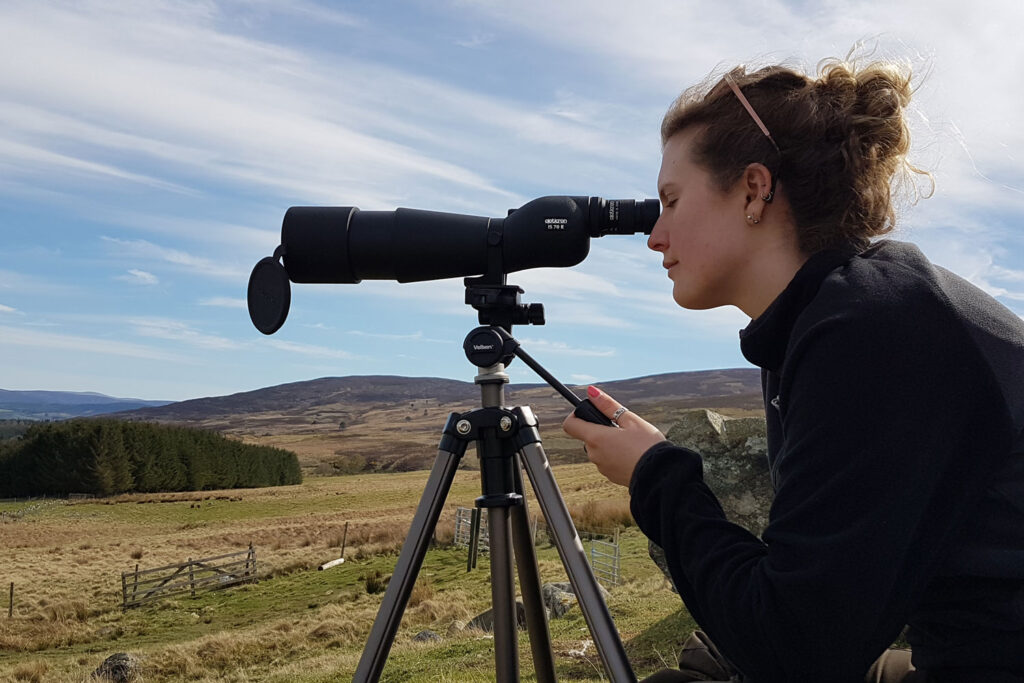Written By Laura Williamson, Ecologist & Assistant Advisor
It is no secret that traditional land management practices face unprecedented pressure in today’s political climate. Likewise, it is widely known that bird populations face exceptional pressures, with some suggesting that more than 40% of bird species in the UK are threatened with extinction.
Our vulnerable bird species face challenges from many angles, including habitat loss and degradation, climate change, and predation, of which farmland and upland management practices are frequently labelled significant contributing factors. This, however, is often not the case. Sustainable and best practice land management techniques can deliver many conservation benefits, and provide essential habitat for many bird species of conservation concern, which cannot find this anywhere else.
Habitat management practices, such as the creation of mosaic heather structure through cutting and burning activities, create nesting, breeding and forage habitat for not only red grouse, but also provides these services to moorland wader and ground-nesting raptor species. Low wetland areas, often associated with non-intensive farming practices, similarly create nesting and feeding habitat for waders; while hedgerow maintenance supports small passerine bird species. Without preservation of these key habitats, the familiar sounds of the countryside would be unrecognisable.
It is important, now more than ever, that land managers are able to demonstrate to policy makers and the public, the conservation value of the management activities that preserve these habitats.

The GWCT Scottish Advisory team can help you achieve this through our comprehensive ornithological survey services. We have experience and expertise offering a range of high quality surveys, tailored to meet the objectives of our clients. Our ornithological surveys follow methodology set out by leading bird conservation bodies, and can be designed to suit specific habitats and species. They can help you to firstly better understand the distribution and breeding success of bird species present on your land, but also how to effectively implement management practices to support these populations and improve their favoured habitats. Alternatively, if you would prefer to collect long-term ornithological data internally, we can help you to streamline this process by setting up bird conservation projects on our Epicollect app.
Our ornithological survey services are not just about data collection — they contribute to the conservation and management of the habitats that support some of our most iconic and vulnerable bird species.
If you would like to discuss your goals and requirements, please contact scottishadvisory@gwct.org.uk.
We are losing the bottom end of the food chains and no-one seems to notice. Where have all the insects and arthropods gone? Even frogs and and other amphibians are disappearing. Why? It is not just agriculture. It is almost universal across the the whole country. Even house flies have almost disappeared. So what is going on and what is causing this masssive decline. There’s no food at the bottom end of the chains. Where has it gone and why. How do we reverse this decline?
If we can’t solve this problem, the mass extinction that has been talked about for so long will happen. I hooe that this alarmist talk will sart at last to wake people up to look at the small and not just the “large easy to identify”. Our present rules are artificial and are working against what’s actually needed. We need entomologists and not more birds of prey.
I can only but agree with nick vZ.
I have been recording moths by light trapping around my farm in central Scotland for 20 or so years. Two things are very noticeable – although the species range has increased, the numbers have decreased and the quantities of “by-catch” has fallen, you could say “almost dramatically” – no longer a trap full of midges and far less beetles.
If anything my farming has become less intensive as age creeps on with the less productive grassland allowed to revert to unimproved wild flower meadows and woods planted.
The general farming pattern in my area has not changed that much in the last 20 years (the biggest one, from using small tractors or foot to get around to quad bikes!), but as nick vZ says it seems to a nation wide problem.